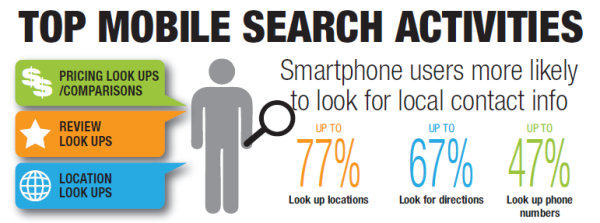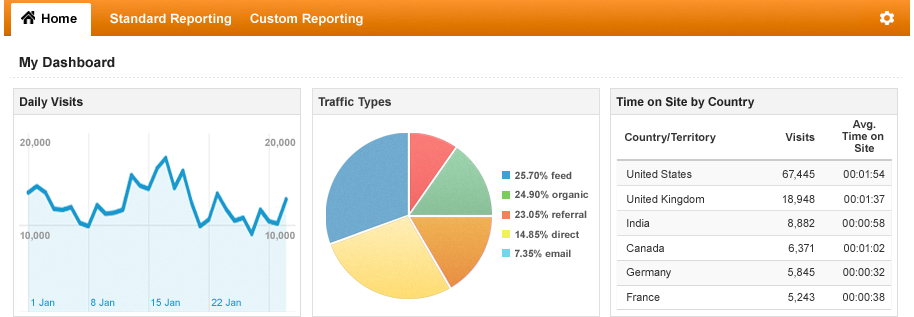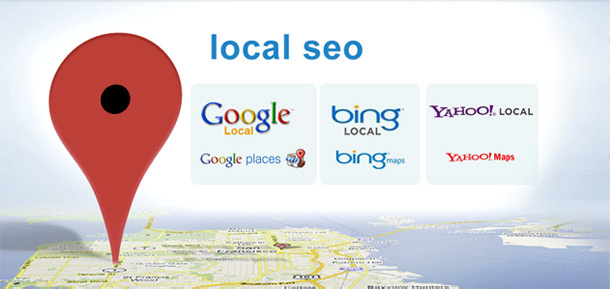E-commerce today is seeing a rise in the number of searchers looking into local businesses.
This is why it’s crucial to “Master the Art of Local SEO” if you wish your business to gain edge over your competitors. This will also allow you to be easily located by people, especially in the case of mobile searchers currently in your area of operations.
But what is Local SEO or Search Engine Optimization and how does its processes differ from SEO that target rankings globally?
Local SEO or local search engine optimization is the process of optimizing your site so you can gain higher local search rankings.
It is the optimization process for the local results in various search engines. This type of search engine optimization is crucial for those with brick and mortar stores or businesses that have a local presence.
When consumers search for a product or service they need, search engines direct them to businesses nearest to them. You want your business on top of the search engine rankings and more important, you want to serve potential consumers relevant data. You want to lure them do business with you.
In order to achieve that, here are few important things to do. First, you’d want to master the 3-step process to KPI Measurement or key performance indicator measurement.
KPI Measurement is a business metric used to evaluate important factors crucial to the success of a business or an organization. This will enable you to maximize your return on investment or ROI.
1. Plan your approach
Define your ROI requirements. This may vary and it usually depends on the type of business that you are in.
Are you looking for actual sales, leads for appointments, traffic increase, database building, etc? Knowing this will enable you to choose specific tracking measures instead of wasting your time tracking statistics that you assume would give you the ROI that you want. Is it page view, click activity, organic ranking or any other indicator? Get rid of guessing and reach your customers when they need you.
2. Put Local Analytics in Place
Since you have already selected only the necessary trackers, you will not have much trouble implementing them.
Next step is to segment your traffic location – from country, to state then up to the city or town or any inner location. After this, find the traffic source. Is it through search, mobile devices, or referred links?
You can use Google Analytics to help you in this area. It is a free web analytics service that Google provides, complete with statistics and basic analytical tools for search engine optimization and social media marketing purposes among other things.
3. Tracking and Analyzing Results
Look regularly through the major search engines and analyze your rankings in the SERPs or Search Engine Results Page. You may have preferred search engines but make sure to include the three major search engines, (Google, Yahoo, Bing). You might also want to track 3rd party search engines like Foursquare and Yelp.
Results like online coupon redemptions, filled up forms, loyalty sign-ups, online store referrals and the like are crucial so it is best to focus on them. If you have the ability to automate reporting these results, then that’s great. This gives you consistency with your Key Performance Index.
It is very important that you are able to effectively and efficiently set up your required KPI so that you will be able to have a clear path of other mechanisms that you will be using as you go through the processes in mastering the art of Local SEO.
As you regularly review your KPI, you can see the adjustments that you need to do in order to make your campaign work better towards your desired ROI.
Now that you have set up your measurement tools to guide you as you go through the path of local SEO, it is time to actually set the path you are taking.
1. Evaluate Current Status
There is an age old question in goal setting that many still end up overlooking and sad to say, has been a common reason for failure.
What do you need so you can go where you want to go?… Know where you are now! See the current status of your online presence. Evaluate your current status. Knowing this will guide you to your next step and help you set attainable goals.
Attainable in the sense that you will be able to see current resources that you can utilize. Have you reached a standard that will allow you to skip some steps? This is very important so you can focus your attention on steps that matter, those that can actually bring you closer to your goal.
2. Set Your Goals
The next step is to set your goals or targets. What do you really want to achieve in terms of search engine ranking and what’s the time frame you’re giving yourself to achieve it. Is it 6 months or longer?
Then figure out at which position you would like to be in the search results. What keywords are you targeting and among those, define which would become your priorities.
It is as well important to determine the type of competition that you have in your industry. A lot of businesses getting an SEO service to help them rank in various search engines think that it can be done overnight. This is far from the truth.
SEO takes time especially with the latest Google Algorithms that focuses on quality content, mobile and user experience. It is important to think about SEO and local SEO as an investment that matures over time and not a quick get rich scheme that may be gone tomorrow.
3. Own the Local Listing
Claim ownership of your listing. This will allow you to control what is being published and prevent competitors from tampering your data, one which usually happens especially in highly competitive niches. You can start with Google then go on to other avenues like Facebook, Foursquare, etc. Having ownership of Google and Facebook local listings will allow you to advance the process in a great way.
4. Create Relevant Content
“Content is King“. Pioneer SEO’s say this as if they are a broken record. This is as true before as it is now. Creating regular quality content in your website can help boost your site’s performance in the search engine results page. Keywords found in relevant content never go wrong.
It is important to think about your user when you are creating content and not just focus on what search engines want. If you put your focus on what your customers need, then you will be able to provide solutions to their concerns. This will also help you establish authority in the industry you’re in.
Content has to be relevant with what your website is all about. It should be helpful and engaging to your customers so they will want to share that content to their friends and family. When you create quality content and it gets shared by a number of people, you consequently improve your brand awareness and rankings since Google has included social signals in the Algorithms.
Having quality content can help your users appreciate your website better compared to your competitors that only have a corporate page and does not provide good and useful content to its customers.
For more expert advice and insightful tips on this area, you can follow sites such as Copyblogger.
In terms of Local SEO, it is important that you localize your content as well. Always come from a viewpoint of someone in the area that you are in. Speak the language of the locals and you certainly will have the edge.
5. Generate Reviews
Whenever you search for a business especially through your mobile phone, there is usually a certain content that welcomes you upon display of the SERPs. Business reviews. 5 stars, 6/10, Unsatisfactory and the like. Then follows a review of the business. Highly rated reviews tend to be the game changer in a certain business. It is extremely important that you’re able to generate high reviews for your business.
This is where great customer relations come into play. Of course if you have impeccable service to begin with, this is a small problem. However, especially for startup businesses, type of service still undergoes improvements. Customers may see something that can make them rate you with 1 star.
The key is to treat customers the way you want to be treated yourself. Keep in mind that everything you show your customers, even the smallest gestures, can get to social networking sites within minutes. And information posted online, proven true or not, can easily influence other people’s opinion about your business.
Online reputation management is a complicated process to go through but there is always a way to do this successfully. For one, being able to communicate with customers in a regular basis usually does the trick and has always generated awesome reviews.
6. Monitor Progress
This is important since this is where the KPI system that you have set-up in the beginning comes in handy. Check your progress from time to time and see what have worked so far and what needs improvement. Do this regularly so that you will be able to make adjustments before things get too late to fix.
It is important to address concerns that you encounter for your website to perform at its best and rank high in the search results.
These processes to master the art of Local SEO can be done even by someone who is just beginning to practice this. You do not need to have an extensive background in order to successfully get the ball rolling in web marketing. These are just basic processes. As you go through your journey towards your goals, you will be able to discover more advanced strategies that will take your campaign to even greater heights.
This Quality Content is Brought to You by Global SEO, Inc. - "The Search Ends Here"
About us and this blog
We are a full service agency that deliver compelling digital marketing solution. Our winning solutions and experience helps to deliver great results across several key areas.
We offers professional SEO services that help websites increase organic search drastically and compete for 1st page rankings of highly competitive keywords.
Recent Posts
- Master the Art of Local SEO July 29, 2024
- Why Is SEO Important For Your Business? May 21, 2024
- Using The Right Social Media Marketing March 8, 2024









